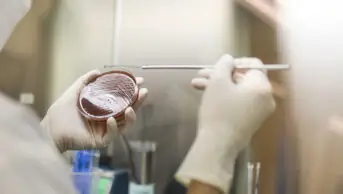
Shutterstock.com
First-line dual therapy for gonorrhoea could become ineffective because of the unprecedented transmission of azithromycin-resistant bacteria, researchers from Public Health England (PHE) have warned in a study published in Lancet Infectious Diseases (online 6 March 2018)[1]
.
They say an ongoing outbreak of the disease in England represents the first time that a high-level, azithromycin-resistant strain of the bacterium Neisseria gonorrhoeae has shown sustained transmission over a number of years, when previously it only emerged in sporadic clusters.
This outbreak was first detected in Leeds in 2015. The authors studied whole-genome sequences on isolates obtained from 60 of the 70 cases of high-level, azithromycin-resistant gonorrhoea reported in England between November 2014 and February 2017. They also compared these sequences from azithromycin-resistant cases from other parts of the UK and Ireland.
The research team, led by Helen Fifer at the National Infection Service, found worrying evidence of rapidly arising high-level resistance.
By studying the presence of certain mutations among the samples, they found that the azithromycin-resistant isolates appeared to have emerged from both susceptible isolates and those with low-level resistance within a short period of time. They say this is particularly concerning given that at the present time around 5% of detected gonorrhoea cases in England show low-level resistance. In such cases, exposure to azithromycin could generate selection pressure that leads to high-level resistance emerging.
UK and international guidelines were changed in recent years to recommend the antibiotic be used first-line to treat the infection alongside ceftriaxone, a cephalosporin used as last-line therapy. It was thought that this strategy could help prolong the use of cephalosporins. However, the authors say their findings indicate that azithromycin alone may not be enough to protect ceftriaxone.
“Surveillance of resistance, regular review of treatment guidelines, and detection of treatment failures are crucial towards keeping gonorrhoea as a treatable infection in the future,” the researchers concluded.

Source: RPS
Kieran Hand, Royal Pharmaceutical Society spokesperson on antibiotics, warned that without the vigilance and co-operation of sexual health clinics, health professional networks and PHE, resistant strains “could easily become dominant”
Kieran Hand, the Royal Pharmaceutical Society spokesperson on antibiotics, warned that the research showed resistance was not a hypothetical problem but an already existing danger to public health.
“Increasing antibiotic resistance in strains of gonorrhoea already mandates treatment with two antibiotics, and this research demonstrates that we may be in danger of losing one of those drugs if resistant strains are allowed to spread unchecked,” said Hand, consultant pharmacist, anti-infectives at University Hospital Southampton NHS Foundation Trust.
“A relatively small number of resistant strains were reported, but without the vigilance and co-operation of sexual health clinics, health professional networks and PHE, these successful strains could easily become dominant.”
Hand added that while the study findings highlighted the importance of gonorrhoea prevention through use of condoms, there was also “an imperative to incentivise the research and development community — both private and public sectors — to discover new antibiotics to meet the challenge of increasingly resistant strains of bacteria causing common infections”.
References
[1] Fifer H, Cole M, Hughes G et al. Sustained transmission of high-level azithromycin-resistant Neisseria gonorrhoeae in England: an observational study. Lancet Infect Dis 2018; doi: 10.1016/S1473-3099(18)30122-1


